Chasing Manhattanhenge Around the World In Kaohsiung
March 11, 2025
Last Updated on March 11, 2025 by Erin Donahue
As someone who has extensively documented Manhattanhenge for years, I can finally check off photographing Kaohsiunghenge from my list. Join me as I explore Taiwan’s own version of this phenomenon, and I’ll share tips for photographing it yourself!
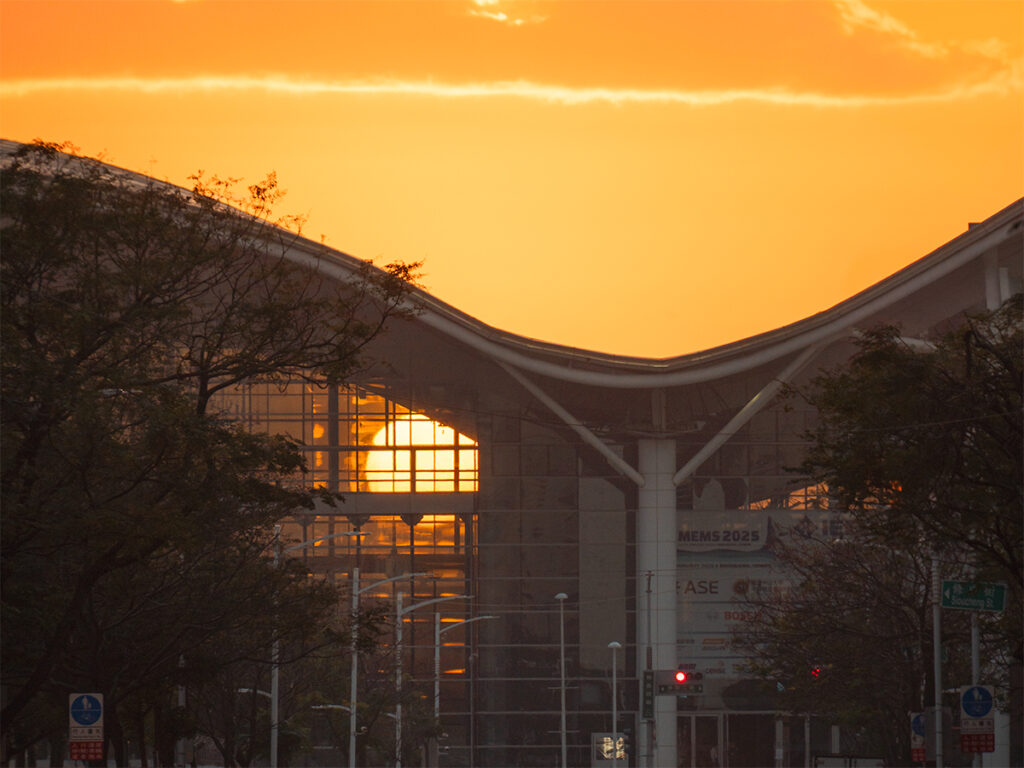
The Origin of the First “Henge”
“Henge” is used to describe an enclosure, and the first henge was Stonehenge in the UK. While Stonehenge derived its name because of its physical setup, it is also the OG of such an event where the sun is enclosed through something man-made. The sun aligns with the monument during the summer and winter solstices (not equinoxes), with the most famous alignment occurring at the summer solstice sunrise when the sun rises directly over the Heel Stone and shines into the center of the monument. The mysterious builders deliberately oriented the main axis of Stonehenge to frame the winter solstice sunset. Built between 3000-1500 BCE, this ancient astronomical calendar continues to bring in tourists from everywhere to witness these spectacular solar events.
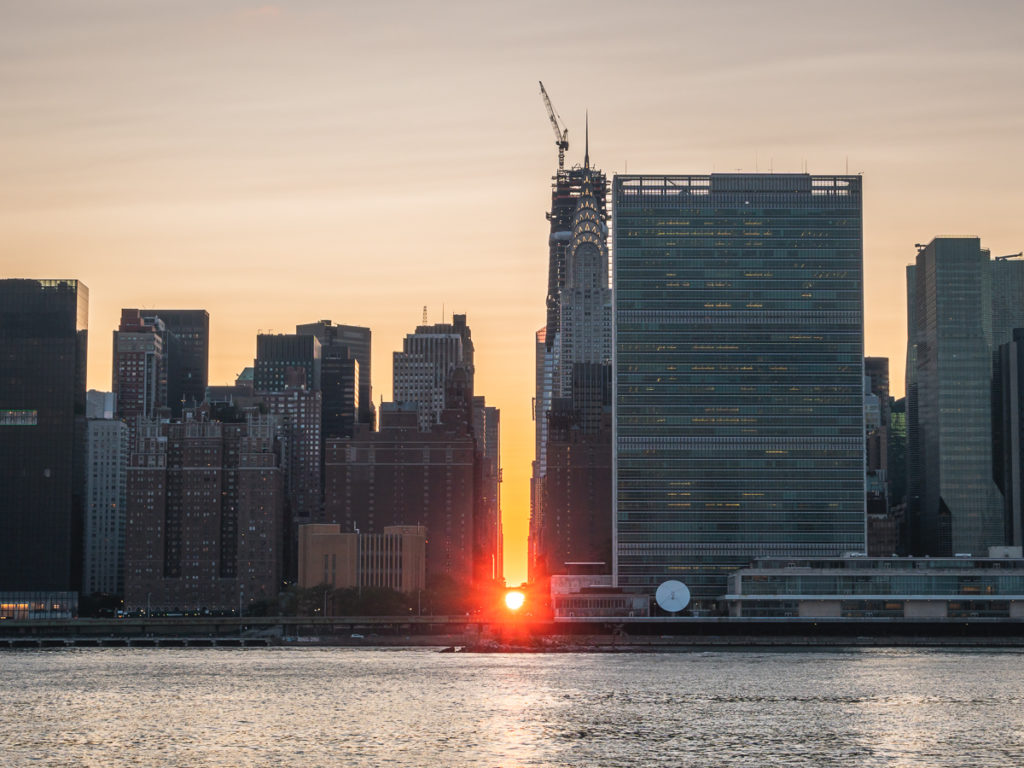
New York City’s Famous Urban Alignment
Manhattanhenge occurs when the setting sun aligns perfectly with Manhattan’s east-west street grid, bathing the skyscrapers in a magnificent golden glow. Streets that normally live in shadow suddenly become corridors of light as the sun slides in perfectly between the grid, typically during late May and mid-July.
The Lesser-Known Reverse Manhattanhenge
While most photographers chase the evening spectacle, fewer know about Reverse Manhattanhenge. This is when the sun performs the same alignment trick at sunrise. The early morning light creates a different mood: cooler tones, emptier streets, and that special stillness that exists before the city fully wakes.
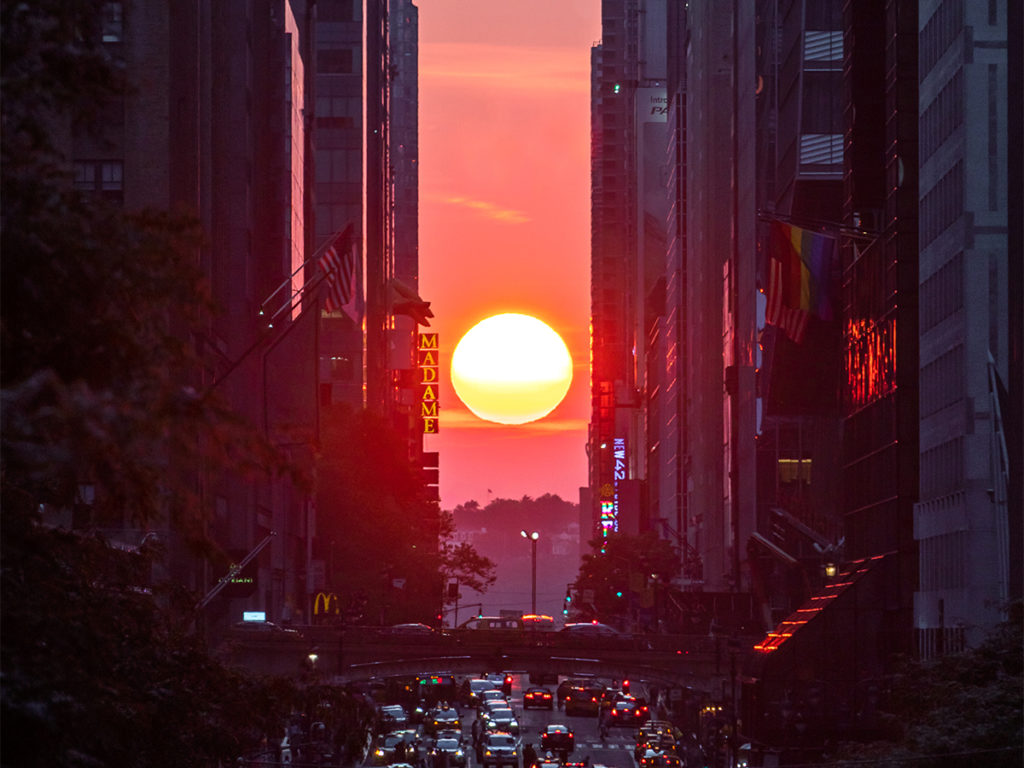
Photographing Kaohsiunghenge Halfway Around the World
What fascinates me most about these alignments is their global symmetry. During the same months when Reverse Manhattanhenge is occurring at sunrise, Taiwan’s second-largest city hosts its own solar spectacle at sunset. A perfect astronomical counterbalance! While Manhattan’s grid sits approximately 29 degrees east from true north, Kaohsiung’s Qingnian Road runs just 19 degrees from the west. This alignment creates the perfect conditions for Kaohsiunghenge during November through January – precisely as Reverse Manhattanhenge occurs across the globe.
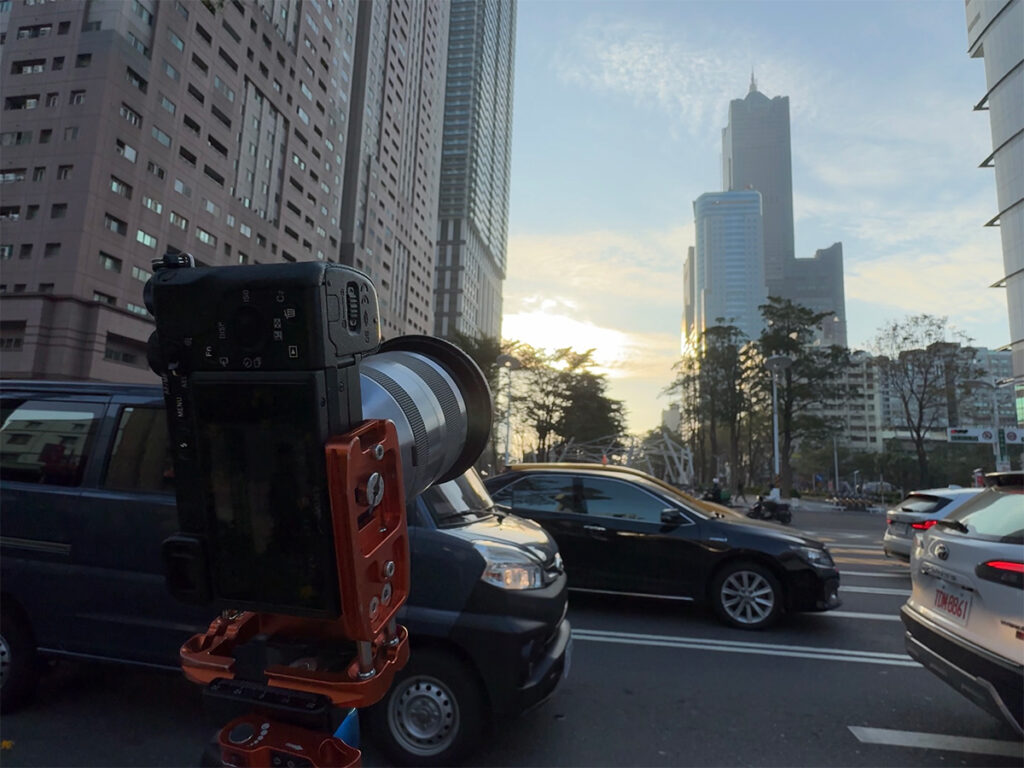
A Celebration of Light and Architecture
Back in 2018-2019, Kaohsiunghenge was a celebrated local phenomenon. The Kaohsiung City Government would close Qingnian 1st Road (青年一路) between Mincyuan 1st Road and Weiren Street to all vehicles, allowing visitors and residents to enjoy the sight safely. Hotels along the alignment even offered special rates for rooms with prime viewing positions. A testament to the spectacle’s draw.
Despite its past popularity, I’ve noticed a curious silence about Kaohsiunghenge online in recent years. I’m not sure if it’s my algorithm, but I haven’t seen a single posted dated past 2020. This has made me even more determined to capture it during my latest visit to Taiwan, adding another urban henge to my worldwide photography collection.

Where To Photograph Kaohsiunghenge
Between my first and second visits to Kaohsiung, there’s been a lot of development all over town, with new buildings popping up everywhere. Here are the prime locations for capturing this phenomenon.
Kaohsiung Cultural Center (高雄市文化中心)
According to when Kaohsiunghenge was popular, the best view to photograph from is Kaohsiung Cultural Center looking down Cingnian Road/Qingnian 1st Road (青年一路) towards the west. The Cultural Center sits on higher ground, providing an excellent vantage point for the spectacular sunset as it aligns with the street.
Kaohsiung Exhibition Center (高雄展覽館)
An interesting architectural design to incorporate into your Kaohsiunghenge photos is Kaohsiung’s Exhibition Center, which offers a different perspective of the alignment. This is where I ended up deciding to photograph the setting sun because the curvy design of the building is unique.
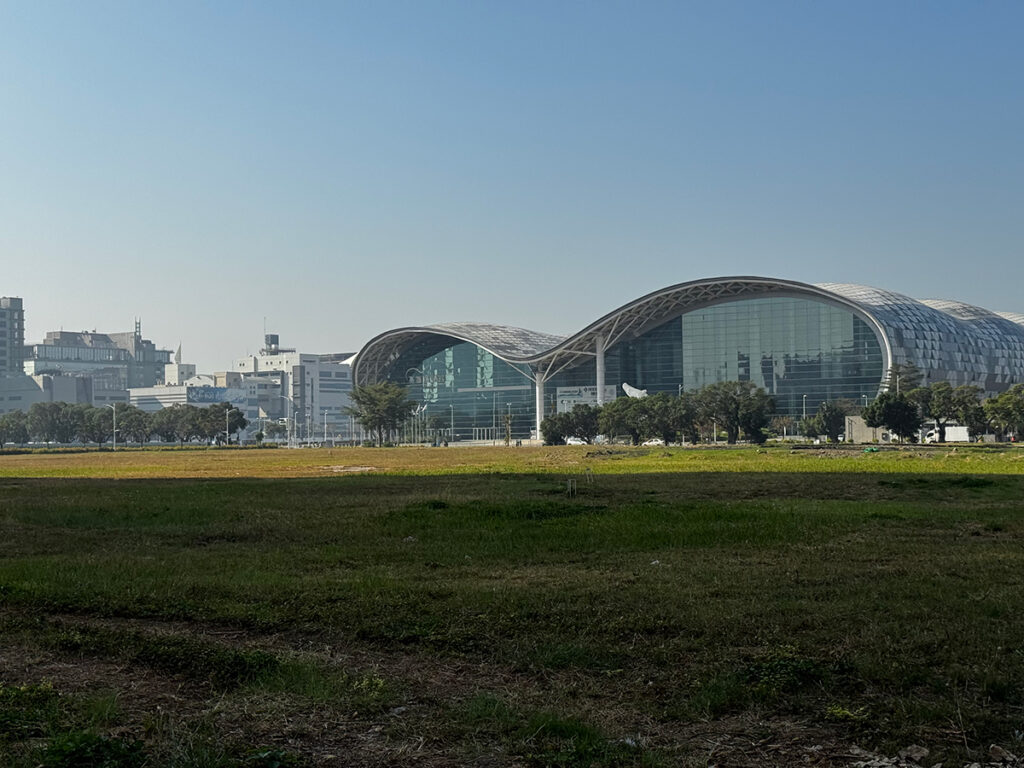
Kaohsiung Port Cruise Terminal (高雄港旅運中心)
Another architectural design to incorporate into your Kaohsiunghenge photos is Kaohsiung’s Port Cruise Terminal. I saw this building back in 2018 when it was in its infancy and construction just started on it. When I returned in 2025, I found it completed in all its grandeur. In person, it looked like a huge whale, but the building design is a silver-white hull with a towering chimney—making for a dramatic silhouette against the setting sun.

Manhattanhenges Around the World
As cities around the world continue to develop grid infrastructure, and planning apps become more user-friendly, there are more cities discovering their own “henge” moments. From New York to Kaohsiung, these brief windows of perfect alignment remind us of the fascinating intersection between human engineering and celestial mechanics.
Whether you are a photographer or simply admire beautiful natural phenomena, I encourage you to map out if your city has a “henge” event. You might discover magic happening right on your doorstep. After photographing both Manhattanhenge and Kaohsiunghenge, I now feel more determined than ever to continue my quest documenting these spectacular alignments around the world.
To keep up to date with everything I share, follow along on my social media and read up on what camera gear I use when I travel.
Leave a Reply Cancel reply
© Erin Donahue Creative LLC, All Rights Reserved
Terms of Service & Privacy Policy